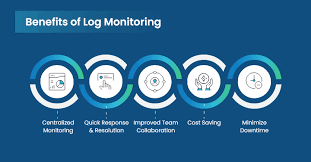In today’s fast-paced digital landscape, every business depends on technology to run operations, deliver services, and maintain customer satisfaction. With complex cloud-native architectures, logs have become an indispensable tool for monitoring, troubleshooting, and improving performance. However, without proper log management, valuable insights can be lost in a sea of data, leading to inefficiencies, delays, and higher operational costs.
What Is Log Management?
Log management is the process of collecting, storing, analyzing, and monitoring log data generated by applications, systems, and networks. Logs provide a chronological record of events, which is crucial for detecting problems, optimizing processes, and ensuring compliance with security and regulatory requirements.
A robust log management system centralizes this data, making it easier for IT teams, developers, and security professionals to work collaboratively and respond quickly to issues.
Why Log Management Matters
1. Faster Incident Resolution
When systems experience downtime or unusual behavior, logs provide the evidence needed to diagnose the problem. By organizing and indexing logs, teams can identify the root cause in minutes instead of hours.
2. Improved Security Monitoring
Logs help track suspicious activities such as unauthorized logins, malware attempts, or unexpected configuration changes. An effective log management strategy allows for real-time alerting, enabling rapid responses to security threats.
3. Compliance and Auditing
Many industries are subject to strict compliance regulations such as GDPR, HIPAA, or PCI DSS. Detailed log records are often required to prove compliance during audits and investigations.
Key Features of Effective Log Management Systems
Centralized Log Collection
Bringing logs from all systems, applications, and services into one location prevents data silos and ensures complete visibility.
Intelligent Filtering and Storage
Not all logs need to be stored indefinitely. Filtering out non-essential logs reduces storage costs while retaining critical data for analysis.
Advanced Search and Analytics
Powerful search capabilities make it possible to quickly find patterns, trends, and anomalies in massive datasets.
Integration with Observability Tools
Modern log management platforms, like Chronosphere, integrate logs with metrics and traces to provide a comprehensive view of system health and performance.
Best Practices for Log Management
- Define Retention Policies: Keep logs as long as needed for business, security, and compliance purposes.
- Use Structured Logging: Standardize log formats to make searching and analysis more efficient.
- Automate Alerts: Set triggers for log patterns that indicate potential issues.
- Regularly Review Logs: Proactively check logs to detect hidden problems before they escalate.
Conclusion
In the era of complex, distributed systems, effective log management is not just a best practice—it’s a necessity. By centralizing, filtering, and analyzing log data, organizations can resolve issues faster, strengthen security, and meet compliance requirements with confidence. With platforms like Chronosphere offering advanced capabilities, businesses can turn raw log data into actionable insights that drive efficiency, reliability, and growth.


